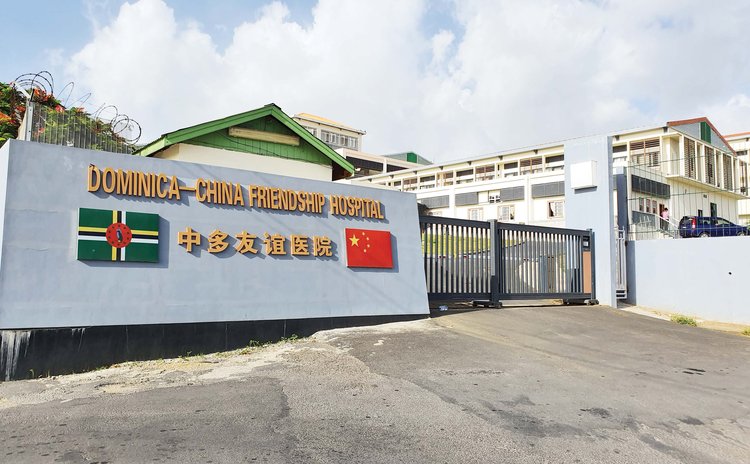Two in-patient buildings are to be commissioned this month: It's only a temporary fix

Patients of the medical and surgical wards of the Dominica China Friendship Hospital (DCFH) have begun the move to upgraded facilities in the new in-patient buildings on the compound.
Last month, a Chinese inspection team completed its examination and review of the buildings and though a few remedial works remain to be done, the improved accommodations have been handed over to the Dominica Hospitals Authority (DHA).
Chief Executive Officer (CEO) of the DCFH Dr. Dexter James, says the in-patient buildings will have increased bed capacity to relieve the strain on the Accident and Emergency (A&E) Department.
"Currently we have 219 beds. We are moving up to 318. We now have 39 beds on medical wards, we are almost doubling it to 60 in the new facility," Dr. James said. "That increase in beds will increase bed management significantly so we don't have people waiting in A&E because we cannot find beds."
Another major concern for hospital staff is the average length of stay for the growing number of patients who are admitted because of non-communicable diseases (NCDs).
"What history says about length of stay on our medical wards, Glover and Imrary, is that it is ten to eleven days. This is a very troubling issue for us now because these are patients who are succumbing to NCDS and cardia problems and they need a long period on those wards. Dr. James said.
The average age of patients on the medical wards has not gone unnoticed by health care providers.
"The average age of patients on our medical ward is 65 years. So, while there is the view that there is no geriatric facility, our medical wards today are essentially a geriatric facility. These are patients with chronic conditions, mainly NCDs or patients having cardiac problems." he said.
Dr. James warned that reducing the number of patients in the A&E Department does not alleviate the problem which drives so many to the hospital.
"I have to say that [increased bed count] is a temporary fix. If we do not begin to impact prevention, it would not be long before these 60 beds are fully occupied and we are back to square one," he said.
The CEO warned that if immediate action is not taken at the Primary Health Care level, then developments to buildings will only be a momentary band aid to a much larger problem.
"Primary Health Care must step up to the plate at this time. If we are to make this new health facility relevant. If that doesn't happen we are going to have a big problem in the next three to four years," Dr. James said.
The wards on the in-patient building have been configured with six semi-private cubicles comprising four beds each. Four single rooms can be used for infections cases or as private rooms, and one semi-private room with two patients to closely monitor critical patients. "The layout is as modern as you would get in any other part of the region and compares favourably towards the United States and the United Kingdom because there is this move towards preserving patient privacy," he said.
The public was assured the capacity of the hospital has been enlarged to deal with mass casualty events and unexpected upsurges in patients. However, immediate action at the primary care level directly impacts how resourceful the hospital can be in these situations.
"Medical and surgical wards have seen a significant increase, and so too has our ICU. We have enough to take care of resident needs now and in the future", Dr. James said. "But this is only dependent on whether primary health care begins to take shape and manage these patients at the primary care level."
Following the successful move of the wards to the new in-patient buildings, their former structures will be repurposed to house admissions, cashing, and outpatient dispensing among other services.
The DCFH also showcased a multipurpose amphitheater-style hall which can accommodate 200 individuals for lectures, conferences, and a host of other events.




